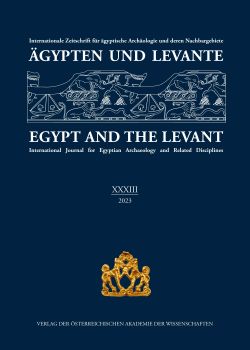
Ägypten und Levante 33, pp. 311-322, 2024/02/28
Internationale Zeitschrift für ägyptische Archäologie und deren Nachbargebiete
International Journal for Egyptian Archaeology and Related Disciplines
This paper examines an unpublished Egyptian black-topped pot lacking a clear context to prove its legitimacy, authenticity, acquisition process, and date. These objectives were achieved by conducting a brief technological analysis of the firing techniques and explaining the complex nature of black-topped pottery production inside and outside of Egypt using experimental archaeology. This was done in addition to checking the dealer’s background and explaining the circumstances of its acquisition. The pot was also dated through a morphological comparison with other dated parallel examples. Based on its form, this article dates the museum piece to Naqada IC-Naqada IIA. To present the pot within its broader social context, the article also offers an overview of the period to which it belongs. The general final discussion explains that the pot’s features—specifically the lack of polishing and slipping on the surface—can be linked to a Nubian connection. The article also explains that trade, as outlined in the text, contributes to innovation and the development of craft specialization. Hence, this piece sheds light on craft specialization and cultural transmission during NIC˗NIIA in Egypt, while also showing the limitations of applying knowledge transfer theories to museum objects. During this period, Upper Egyptian elites relied on surplus accumulated luxury items, including black-topped pottery. Recent studies, however, show that black-topped pottery was not only a luxury item but was also used to serve beer in ceremonies organized by the emerging elite. The pot’s restricted form is interpreted as evidence of the shift toward trade, aligning with previous arguments for the same period that draw on similar forms of black-topped pottery at Abydos. In other words, this type of pottery was valued for both its aesthetic beauty and its functional utility.
Keywords: Black-topped pottery; Predynastic Pottery; Naqada - Pottery Studies; Ancient Egypt; Macquarie University History Museum